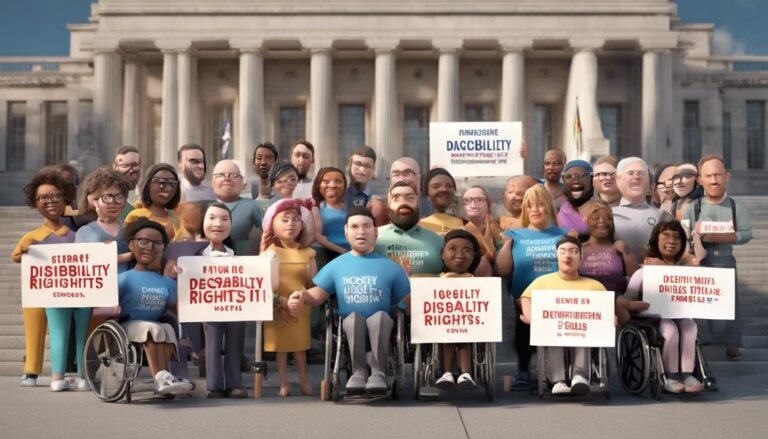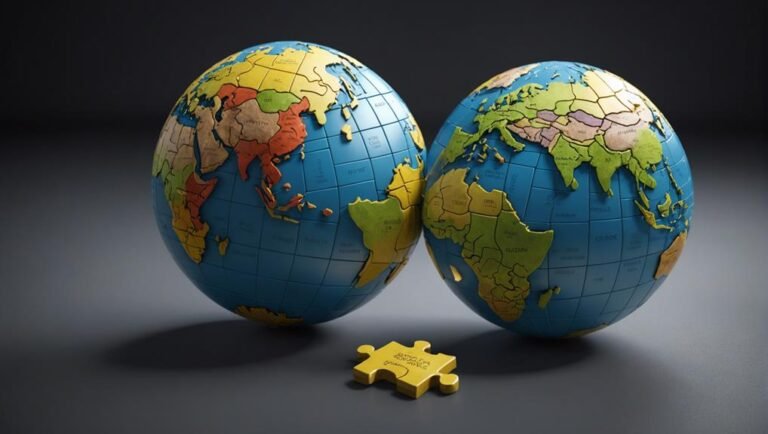Depression in the Economy: Definition and Example
An economic depression entails significant GDP contractions, prolonged high unemployment, declines in consumer confidence, and global economic turmoil. For instance, the Great Depression of 1929 led to a 25% U.S. unemployment rate and wage drops. Such crises trigger financial distress, impacting trade and investment globally. The aftermath often includes policy reforms to avert future depressions and stabilize economies. Understanding the distinctions between depressions and recessions, their triggers, government responses, and recovery strategies is essential. This overview provides insights into economic depressions, their effects, and the measures taken to combat them.
Key Takeaways
- Economic depressions involve significant GDP contractions and high unemployment.
- Global economic turmoil results from prolonged economic stagnation.
- The Great Depression of 1929 saw a 25% unemployment rate in the U.S.
- Regulations like FDIC and SEC were implemented post-Great Depression.
- Depressions are rare, severe, and have long-lasting economic impacts.
Economic Depression Overview
Economic depressions represent profound and protracted downturns in economic activity characterized by significant contractions in real GDP, prolonged periods of high unemployment, and substantial declines in consumer confidence and investments. When viewed in a historical context, depressions like the Great Depression of 1929 to 1941 have had global implications, causing widespread economic turmoil and social unrest.
The reverberations of such economic crises transcend borders, affecting trade, investment, and employment across nations. Understanding the global implications of economic depressions is essential for policymakers and businesses to navigate the challenges posed by such prolonged downturns and devise strategies to mitigate their impact on societies worldwide.
Characteristics and Consequences
The profound and protracted downturns in economic activity during depressions like the Great Depression of 1929 to 1941 have far-reaching consequences that extend beyond national borders, impacting trade, investment, and employment globally.
- Long-Term Impacts: Depressions can lead to a prolonged period of economic stagnation and slow recovery, affecting generations to come.
- Financial Distress: Individuals and businesses may face bankruptcy, loss of savings, and reduced access to credit during depressions.
- Unemployment Crisis: High levels of unemployment persist, creating social and economic challenges.
- Global Economic Instability: Depressions can trigger global economic crises, affecting international trade and investment.
- Policy Reforms: Governments implement regulatory changes and economic policies to prevent future depressions and mitigate their effects.
Notable Depression Examples
Amidst the historical context of economic downturns, notable depression examples offer valuable insights into the lasting impacts of severe and prolonged economic crises.
The Great Depression serves as a prime illustration, beginning in 1929 with the stock market crash and enduring for roughly a decade, leaving a profound global impact. During this period, the U.S. witnessed unemployment rates soaring to nearly 25% in 1933, accompanied by a significant 42% drop in wages and a 25% decline in real estate prices.
The repercussions of the Great Depression were far-reaching, leading to the implementation of new regulations like the Federal Deposit Insurance Corporation (FDIC) and the Securities and Exchange Commission (SEC) to prevent a recurrence and stabilize the economy.
Understanding Depression Vs. Recession
Comparing the characteristics of depressions and recessions provides valuable insights into the distinct features of these economic downturns.
- Historical Comparisons: Depressions are rare but severe, like the Great Depression in 1929 lasting over a decade, while recessions are more frequent occurrences in the economic cycle.
- Long Term Impacts: Depressions have lasting effects on economies, such as high unemployment rates and significant drops in GDP, compared to the shorter-term impacts of recessions.
- Severity: Depressions entail a more profound economic decline, often with double-digit percentage drops in GDP, contrasting with the milder GDP declines in recessions.
- Policy Responses: Governments implement different policies to combat recessions and depressions, with more drastic measures needed for the latter due to their prolonged nature.
- Global Influence: Depressions, like the Great Depression, have worldwide repercussions impacting multiple countries, unlike recessions that are more contained.
Signs and Triggers of Depressions
Historical comparisons between depressions and recessions reveal distinct features in the economic cycle, particularly when examining the signs and triggers of depressions.
Decline in confidence is a key indicator signaling the onset of a depression. Events like the subprime mortgage crisis have shown how a sharp decrease in consumer confidence can lead to financial instability. This decline in confidence often results from factors like falling home prices, eroding personal wealth, and subsequent reductions in consumer spending.
Signals of an impending depression can be observed through declines in consumer confidence indices, with a particular focus on the Expectations Index.
To prevent depressions, policymakers often resort to expansionary fiscal policy, monetary policy adjustments, and tools such as lower interest rates and quantitative easing.
Government Responses and Interventions
Government responses and interventions play an essential role in mitigating the effects of economic depressions and fostering recovery.
- Government Policies: Implementing fiscal and monetary policies to stimulate the economy.
- Intervention Effectiveness: Evaluating the impact of interventions on economic indicators like GDP growth and unemployment rates.
- Regulatory Measures: Introducing laws and regulations to prevent future economic crises.
- Stimulus Packages: Providing financial assistance to businesses and individuals to boost spending.
- Job Creation Programs: Implementing initiatives to reduce unemployment and stimulate economic activity.
These interventions are pivotal in maneuvering through economic downturns and setting the stage for recovery. By analyzing the effectiveness of government actions, policymakers can tailor interventions to address specific economic challenges and enhance overall stability.
Strategies for Economic Recovery
In devising effective strategies for economic recovery, a thorough analysis of key economic indicators and targeted interventions is essential. Monetary policies and fiscal measures play vital roles in stimulating economic growth post-depression.
Monetary policies, such as adjusting interest rates and implementing quantitative easing, can encourage borrowing and investment. On the other hand, fiscal measures, like government spending on infrastructure projects or tax cuts, can boost consumer spending and business activities.
Conclusion
In the intricate tapestry of the economy, depressions loom like dark storm clouds, casting shadows of uncertainty and hardship. Their prolonged nature and severe impact set them apart from the more common recessions, leaving lasting scars on nations and societies.
Through strategic government interventions and collective efforts, the path towards economic recovery after such tumultuous times can be navigated, paving the way for a brighter tomorrow amidst the stormy seas of financial turmoil.







